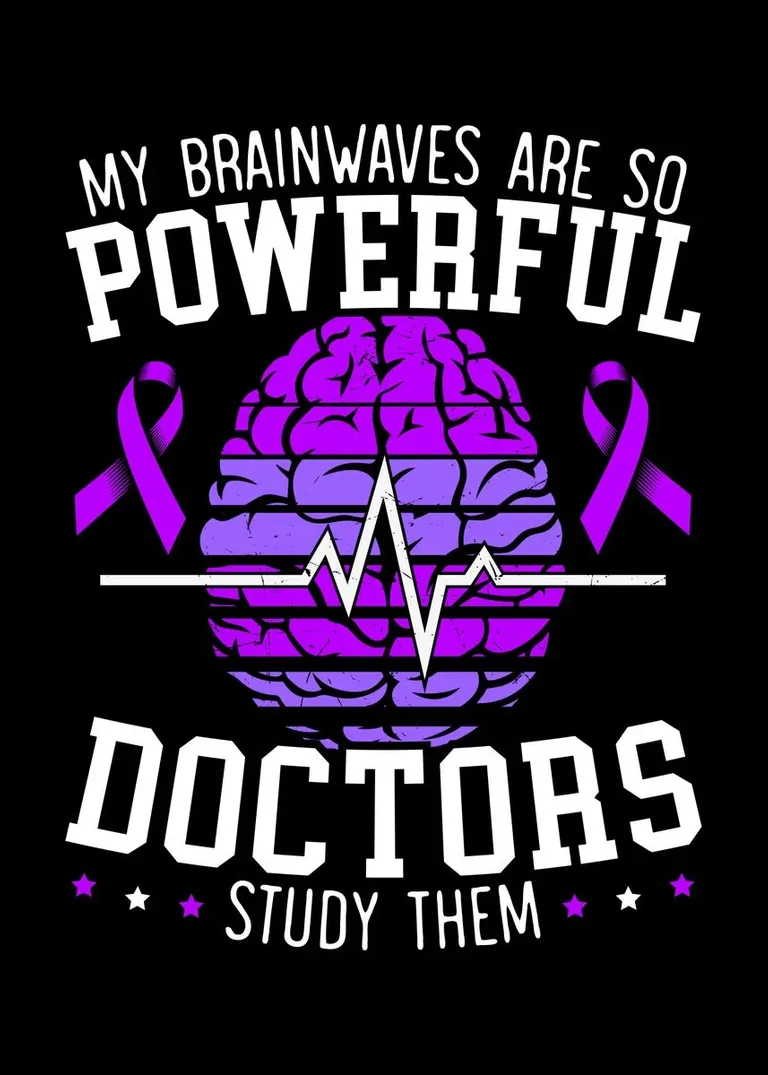My family used to make fun of me for spacing out all the time when having a conversation. My mom knew something had to be wrong. She was determined to take me to the doctor after I froze in the walmart parking lot and almost got hit by a car. I was then diagnosed with epilepsy when I was 14 years old. They said I have Juvenile Myoclonic Epilepsy (JME).
JME is considered the most common generalized form of Epilepsy. It is first noticed in adolescence. It can develop in a child who has had childhood absence Epilepsy.
There are different seizure types with JME;
Myoclonic
Generalized tonic-clonic seizures
Absence seizures
Myoclonic; ---- Jerks or seizures happen within 1 to 2 hours of waking up in the morning or after a nap. ---- Shock-like and irregular movements of both arms. Sometimes it only happens in the fingers, making the person seem clumsy or prone to dropping things. ---- Myoclonic seizure typically occur on one side of the body, in 1 out of 5 people. ---- Usually triggered by lack of sleep and flashing lights. ---- Not all myoclonus or muscle jerks are seizures. Hypnic jerks are non-seizure movements that are isolate muscle jerks. These usually occur as they are falling asleep.
Generalized tonic-clonic seizures; ---- Usually begin a few months after the myoclonic jerks begin. ---- Also happen in the morning when a cluster of myoclonic jerks may occur before the tonic-clonic seizure.
Absence Seizures; ---- Happen in less than half of people with JME ---- These are very short, typically only lasting less than 10 sec and usually don't occur every day. ---- These may not affect a person's awareness as much as absence seizure in people that have childhood or juvenile absence epilepsy. ---- Both males and females are affected equally.
Triggers; ---- Lack of sleep and fatigue, mainly after drinking too much alcohol, are the most powerful causes of myoclonic jerks and generalized tonic-clonic seizures in JME. ---- Mental and emotional stress, especially excitement or frustration. ---- Some people have seizures triggered by flashing lights, such as strobe lights, TV, video games, or light shining through trees or reflecting off ocean waves or snow. These are called photosensitive seizures.
Inherited; Genetically determined syndrome. Most people with JME do not have abnormal results on testing for specific epilepsy genes. Half (50 to 60%) of families with JME report seizures in either a direct relative or a cousin. The inheritance pattern is a complex type, although there are certain subtypes with distinct genetic patterns.
Diagnosed; ---- Healthcare providers will ask about what happens when you have a seizure to determine the types that you have. They will also take history of your health history and your families health and do a physical and neurological examination. ---- The EEG (electroencephalogram) is the most important test in making a diagnosis of JME. An EEG in untreated individuals is typically abnormal with a specific EEG pattern, known as 3-6 Hz generalized polyspike and wave discharge. About a third of people with JME may show an abnormal EEG in response to flickering lights (called a photoparoxysmal response). ---- MRI scans are typically normal and are not indicated (medically needed) in most cases.
Treatment; ---- Education about lifestyle and avoidance of seizure triggers. Avoiding sleep deprivation is essential. People with JME should make sure they get adequate rest and have appropriate outlets for emotions and stress to lessen the potential for seizures. It is highly advised that people avoid drinking alcohol. ---- Valproic acid is the most effective seizure medication to treat JME. However, it is not the appropriate first choice for women in their childbearing years. ---- Lamotrigine is widely used for JME. Infrequently, it may lead to worsening of the myoclonic jerks even though it may help the generalized convulsions and absence seizures. ---- Levetiracetam is another possible drug choice. It has been approved for treating myoclonic seizures in JME. However, it has not been well studied for all the seizure types that may be seen. ---- Other options can include topiramate, zonisamide, or clonazepam. Clonazepam given in small doses could be effective for myoclonic jerks. ---- Avoid vigabatrin, tiagabine, gabapentin, pregabalin, phenytoin, oxcarbazepine, and carbamazepine, as these can worsen seizures, especially myoclonic jerks and absences in JME. Occasionally, carbamazepine and phenytoin may be useful for generalized convulsions. ---- If seizures are not controlled, seek specialized care to determine if seizures are properly diagnosed and to explore all treatment options.
Outlook; ---- People with JME tend to improve after the fourth decade of life. ---- Seizures are generally well controlled with medications in up to 90% of people. ---- People who have multiple seizure types may require more medications to control them. ---- It is likely that lifelong treatment with a seizure drug will be necessary, even in people with well-controlled JME. Withdrawal could result in a relapse of seizures, even in people who have been seizure free for many years with appropriate drugs. ---- In some people with mild forms of the condition, the dose of seizure medication may be reduced slowly over months, particularly in older individuals. If myoclonic seizures come back or persist, medications need to be restarted.
DON'T IGNORE THE SIGNS OF EPILEPSY!!!!! Hope this information can help someone as well.

Congratulations @taytaylayne! You have completed the following achievement on the Hive blockchain and have been rewarded with new badge(s):
Your next payout target is 50 HP.
The unit is Hive Power equivalent because post and comment rewards can be split into HP and HBD
You can view your badges on your board and compare yourself to others in the Ranking
If you no longer want to receive notifications, reply to this comment with the word
STOPSupport the HiveBuzz project. Vote for our proposal!